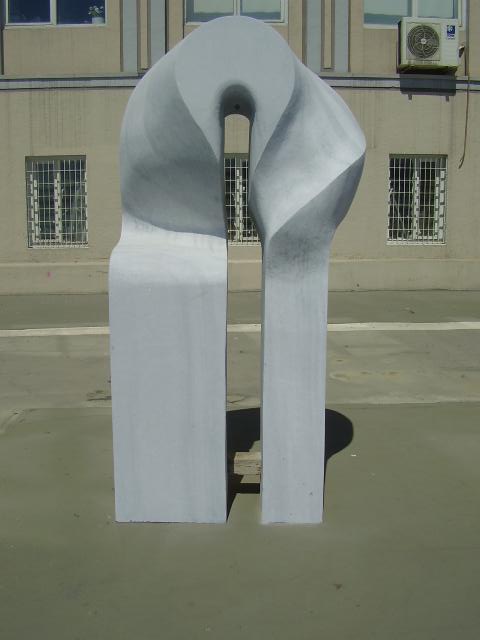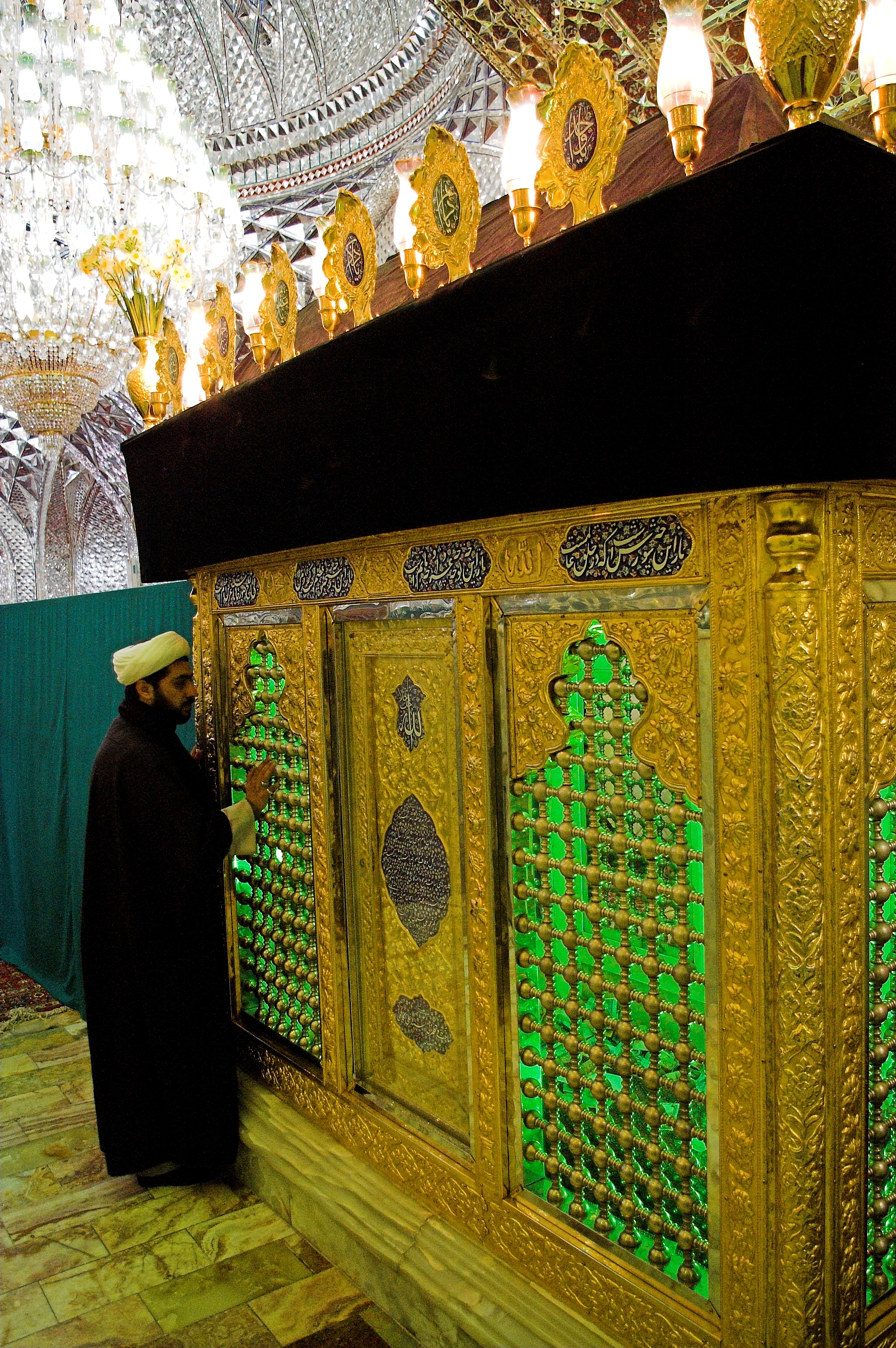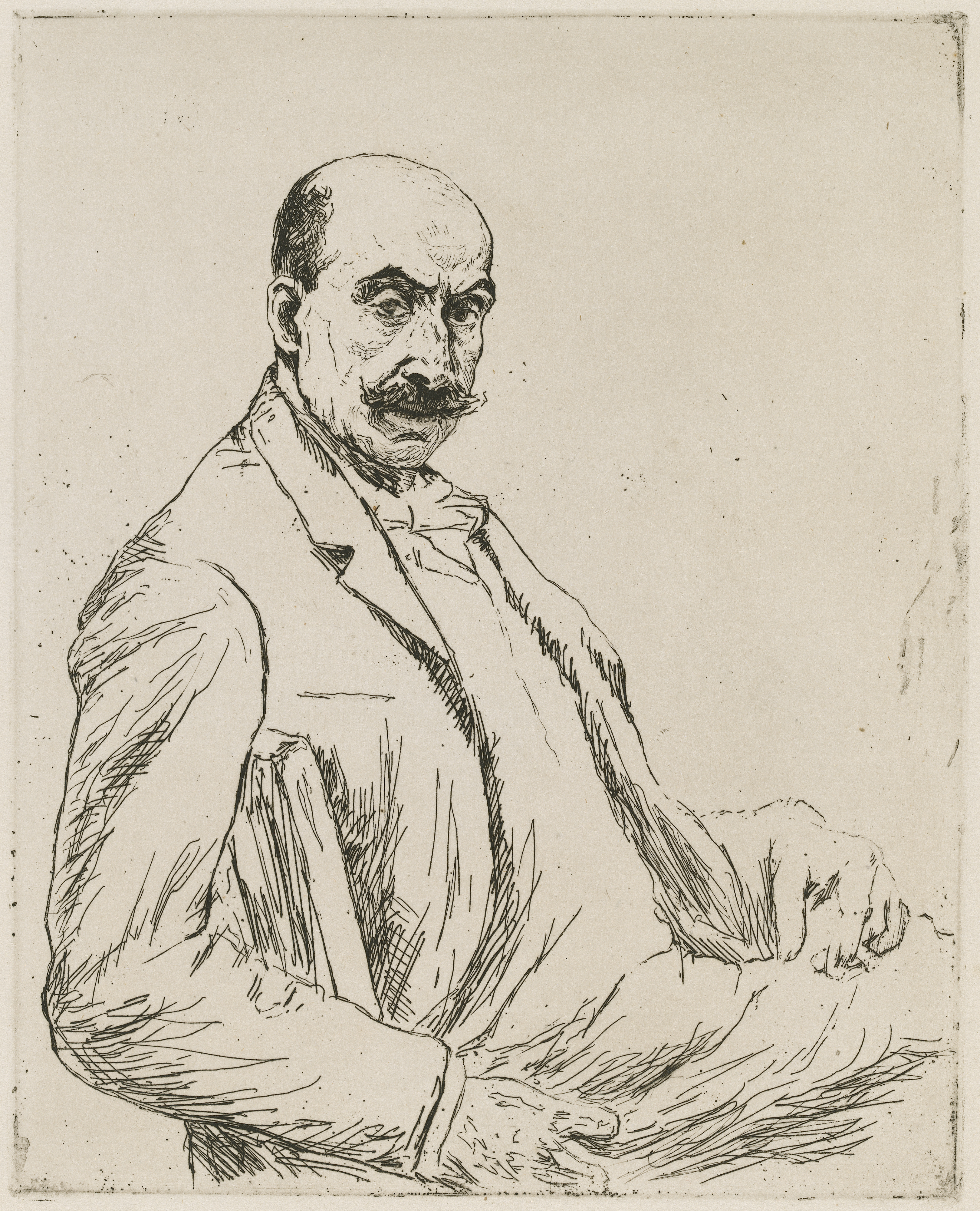|
Namık İsmail
Namık İsmail (1890 in Samsun – August 30, 1935 in Istanbul) was a Turkish Impressionist painter and art educator, who received his training in France. Biography İsmail was born into an upper-class family that moved to Istanbul while he was still a child. After attending the public schools, he was enrolled at the Saint Benoit French High School in Istanbul. Inspired by his father's interest in calligraphy, he also took private art lessons from Şevket Dağ. After he graduated, his father decided to send him to Paris to continue his studies.Brief biography @ Sanal Müze. |
Namık İsmail Otoportre
Namik or Namık is a masculine given name. Notable people with the name include: * Namig Abdullayev (born 1971), Azerbaijani wrestler * Namik Dokle (born 1946), Albanian politician * Namık Gedik (1911–1960), Turkish physician and politician * Namık İsmail (1890–1935l), Turkish painter * Namık Kemal (1840–1888), Ottoman Turkish nationalist, poet, novelist, playwright, journalist, and social reformer * Namik Paul (born 1987), Indian actor * Namik Resuli (1908–1985), Albanian linguist and academic * Namık Kemal Şentürk (1922–2020), Turkish politician * Namık Tan (born 1956), Turkish diplomat * Namık Uğurlu (1976–2015), better known as Ankaralı Namık, Turkish singer * Namık Kemal Yolga (1914–2001), Turkish diplomat and statesman, known as the Turkish Schindler * Namık Kemal Zeybek (born 1944), Turkish politician Middle name * Mehmed Namık Pasha Mehmed Emin Namık Pasha (1804 – 1892) was a prominent Ottoman statesman and military reformer, who is c ... [...More Info...] [...Related Items...] OR: [Wikipedia] [Google] [Baidu] |
İbrahim Çallı
İbrahim Çallı (13 July 1882 in Çal – 22 May 1960 in İstanbul) was a Turkish painter. He is popularly known as Çallı İbrahim. Biography İbrahim Çallı was born in Çal, Denizli. He showed early interest in painting during his primary and secondary education which he finished in his hometown and in İzmir. In 1899 he went to Istanbul where he worked in several jobs while he continued painting. Meanwhile, he took drawing lessons from an Armenian-origin Ottoman painter -Roben Efendi- at Grand Bazaar. With the support of Şeker Ahmet Paşa he entered the Fine Arts School (now Mimar Sinan University) in 1906. Graduating the school with the highest degree after four years, Çallı was sent to France with a fellowship from government where he studied under Fernand Cormon. During his years in France he didn't pay much attention to upcoming movements like cubism, he embraced a free style close to impressionism. With the outbreak of World War I he returned home and was appoin ... [...More Info...] [...Related Items...] OR: [Wikipedia] [Google] [Baidu] |
Asena
Asena is the name of a she-wolf associated with the Oghuz Turkic foundation myth. The ancestress of the Göktürks is also a she-wolf, mentioned yet unnamed in two different "Wolf Tales" recorded by Chinese chroniclers. The legend of Asena tells of a young boy who survived a battle; a female wolf finds the injured child and nurses him back to health. The she-wolf, Bestiality, impregnated by the boy, escapes her enemies by crossing the Western Sea to a cave near the Qocho mountains and a city of the Tocharians, giving birth to ten half-wolf, half-human boys. Of these, Yizhi Nishidu becomes their leader and establishes the Ashina tribe, Ashina clan, which ruled over the Göktürk and other Turkic peoples, Turkic nomadic empires. Modern era With the rise of Turkish nationalism, Turkish ethnic nationalism in the 1930s, the veneration of figures of Turkic Mythology, such as Wolves in folklore, religion and mythology#Turkic and Mongolian, Bozkurt, Asena and Ergenekon was resurgent. Th ... [...More Info...] [...Related Items...] OR: [Wikipedia] [Google] [Baidu] |
Escutcheon (heraldry)
In heraldry, an escutcheon () is a shield that forms the main or focal element in an Achievement (heraldry), achievement of arms. The word can be used in two related senses. In the first sense, an escutcheon is the shield upon which a coat of arms is displayed. In the second sense, an escutcheon can itself be a charge (heraldry), charge within a coat of arms. Escutcheon shapes are derived from actual shields that were used by knights in combat, and thus are varied and developed by region and by era. Since shields have been regarded as military equipment appropriate for men only, British ladies customarily bear their arms upon a Lozenge (heraldry), lozenge, or diamond-shape, while clergymen and ladies in continental Europe bear their arms upon a Cartouche (design), cartouche, or oval. Other shapes are also in use, such as the roundel (heraldry), roundel commonly used for arms granted to Aboriginal Canadians by the Canadian Heraldic Authority, or the Nguni shield used in Coats of ar ... [...More Info...] [...Related Items...] OR: [Wikipedia] [Google] [Baidu] |
National Emblem Of Turkey
Turkey has no official national emblem, but the crescent and star ( tr, ay-yıldız, ) design from the national flag is in use as the ''de facto'' national emblem on Turkish passports, Turkish identity cards and at the diplomatic missions of Turkey. The crescent and star are from the 19th-century Ottoman flag (1844–1923) which also forms the basis of the present-day Turkish flag. Following the abolition of the Sultanate on 1 November 1922, the Ottoman coat of arms was no longer used and the crescent and star became Turkey's de facto national emblem. In the national identity cards of the 1930s the horns of the crescent were facing left, instead of the now more common orientation towards right. History The coat of arms of the Sultan was abolished from usage after the abolition of the Ottoman sultanate in 1922. In its stead, the star and crescent on the flag was adopted. Three years later, in 1925, Ministry of Education opened a contest for determining another official ... [...More Info...] [...Related Items...] OR: [Wikipedia] [Google] [Baidu] |
Ministry Of National Education (Turkey)
The Ministry of National Education ( tr, Milli Eğitim Bakanlığı) is a government ministry of the Republic of Turkey, responsible for the supervision of public and private educational system, agreements and authorizations under a national curriculum. The ministry is headed by Mahmut Özer. History After 1910, a Higher Education Office and a Libraries Inspection Office were established. During the War of National Liberation, there were two ministries of education. The Ministry of Education of the Turkish Grand National Assembly was in Angora (became known as Ankara after 1923, and in English as such after 1930), the Ministry of Education of the Ottoman Government in Constantinople (became known as Istanbul in English after 1930). After the Turkish Grand National Assembly was opened on 23 April 1920 a "Ministry of Education" was established by Law no. 3 of 2 May 1920 as one of the eleven ministries working under the Council of Ministers.Background written by the Ministry of Nati ... [...More Info...] [...Related Items...] OR: [Wikipedia] [Google] [Baidu] |
Mimar Sinan Fine Arts University
The Mimar Sinan Fine Arts University ( tr, Mimar Sinan Güzel Sanatlar Üniversitesi, or MSGSÜ) is a Turkish public university dedicated to higher education in the fine arts. It is located in the Fındıklı neighbourhood of Beyoğlu, Istanbul, Turkey. Founded in 1882 by Osman Hamdi Bey, the institution imitated the traditional European Beaux-Arts model and was the first Western-style art academy of its kind in the Middle East. The Mimar Sinan Fine Arts High Schools in Istanbul and Ankara have no relation with the Mimar Sinan Fine Arts University. History On January 1, 1882, he renowned Turkish painter, art historian, archaeologist, and museum curator, Osman Hamdi Bey established the School of Fine Arts (Sanayi-i Nefise Mekteb-i Âlisi, formally Mekteb-i Sanayi-i Nefise-i Şâhâne or Sanayi-i Nefise Mektebi) here. When it opened on March 2, 1883, with eight instructors and 20 students, it was Turkey's first educational institution for the fine arts and architecture. In ... [...More Info...] [...Related Items...] OR: [Wikipedia] [Google] [Baidu] |
Republicanism In Turkey
Kemalism ( tr, Kemalizm, also archaically ''Kamâlizm''), also known as Atatürkism ( tr, Atatürkçülük, Atatürkçü düşünce), or The Six Arrows ( tr, Altı Ok), is the founding official ideology of the Republic of Turkey.Eric J. Zurcher, Turkey: A Modern History. New York, J.B. Tauris & Co ltd. page 181 Kemalism, as it was implemented by Mustafa Kemal Atatürk, was defined by sweeping political, social, cultural and religious reforms designed to separate the new Turkish state from its Ottoman predecessor and embrace a Western-style modernized lifestyle,Cleveland, William L., and Martin P. Bunton. ''A History of the Modern Middle East''. Boulder: Westview, 2013. including the establishment of secularism/laicism (french: laïcité), state support of the sciences, free education, and many more. Most of those were first introduced to and implemented in Turkey during Atatürk's presidency through his reforms. Many of the root ideas of Kemalism began during the late Ottom ... [...More Info...] [...Related Items...] OR: [Wikipedia] [Google] [Baidu] |
İleri
''İleri'' (literally ''Forward''), was a Turkish newspaper founded on 1 January 1918 by Celal Nuri İleri (1877–1938) and his brother Suphi Nuri İleri (1887–1945). It was initially published under the name ''Ati'' until 12 February 1919. The newspaper supported the Turkish War of Independence. Articles written by modern Turkey's founder Atatürk were published anonymously by the newspaper. ''İleri'' became the voice of the Turkish national movement in Istanbul. However, in 1920, the newspaper's founder, Celal Nuri, was arrested by the English in Istanbul Istanbul ( , ; tr, İstanbul ), formerly known as Constantinople ( grc-gre, Κωνσταντινούπολις; la, Constantinopolis), is the List of largest cities and towns in Turkey, largest city in Turkey, serving as the country's economic, ... and sent into exile. The newspaper was published a total of 2436 issues until 2 December 1924. Publication was resumed by Suphi Nuri in 1944. References {{DEFAULTSORT ... [...More Info...] [...Related Items...] OR: [Wikipedia] [Google] [Baidu] |
Mullah
Mullah (; ) is an honorific title for Shia and Sunni Muslim clergy or a Muslim mosque leader. The term is also sometimes used for a person who has higher education in Islamic theology and sharia law. The title has also been used in some Mizrahi and Sephardic Jewish communities to refer to the community's leadership, especially religious leadership. Etymology The word ''mullah'' is derived from the Arabic word ''mawlā'' ( ar, مَوْلَى), meaning "vicar", "master" and "guardian". Usage Historical usage The term has also been used among Persian Jews, Bukharan Jews, Afghan Jews, and other Central Asian Jews to refer to the community's religious and/or secular leadership. In Kaifeng, China, the historic Chinese Jews who managed the synagogue were called "mullahs". Modern usage It is the term commonly used for village or neighborhood mosque leaders, who may not have high levels of religious education, in large parts of the Muslim world, particularly Iran, Turkey, ... [...More Info...] [...Related Items...] OR: [Wikipedia] [Google] [Baidu] |
Osman Nuri Pasha
Osman Nuri Pasha ( ota, عثمان نوری پاشا; 1832, Tokat, Ottoman Empire – 4 to 5 April 1900, Constantinople, Ottoman Empire), also known as Ghazi Osman Pasha ( tr, Gazi Osman Paşa), was an Ottoman Empire, Ottoman field marshal. Being one of the most respected and decorated Ottoman Pasha, pashas of all time, many songs have been written for him, and many places have been named after him. This is mainly because he Siege of Plevna, held the Ottoman Bulgaria, Bulgarian town of Pleven, Plevna for five months against superior Russo-Romanian forces in 1877 during the Russo-Turkish War (1877–1878), Russo-Turkish War, though the city eventually fell. Early life and education Osman Nuri was born into the prominent Turkish Yağcıoğulları family of the city of Tokat. His father was a civil worker who, soon after Osman's birth, was appointed to a position in the Ottoman capital, so the family moved to Ottoman Constantinople, Constantinople (now Istanbul). Osman a ... [...More Info...] [...Related Items...] OR: [Wikipedia] [Google] [Baidu] |
Max Liebermann
Max Liebermann (20 July 1847 – 8 February 1935) was a German painter and printmaker, and one of the leading proponents of Impressionism in Germany and continental Europe. In addition to his activity as an artist, he also assembled an important collection of French Impressionist works. The son of a Jewish banker, Liebermann studied art in Weimar, Paris, and the Netherlands. After living and working for some time in Munich, he returned to Berlin in 1884, where he remained for the rest of his life. He later chose scenes of the bourgeoisie, as well as aspects of his garden near Lake Wannsee, as motifs for his paintings. Noted for his portraits, he did more than 200 commissioned ones over the years, including of Albert Einstein and Paul von Hindenburg. Liebermann was honored on his 50th birthday with a solo exhibition at the Prussian Academy of Arts in Berlin, and the following year he was elected to the academy. From 1899 to 1911 he led the premier avant-garde formation in Germany ... [...More Info...] [...Related Items...] OR: [Wikipedia] [Google] [Baidu] |




